-
×
 Social Media Growth Program By Jay Shetty
1 × $85,00
Social Media Growth Program By Jay Shetty
1 × $85,00 -
×
 Your Most Profitable Quarter Yet By Alyssa Coleman
1 × $23,00
Your Most Profitable Quarter Yet By Alyssa Coleman
1 × $23,00 -
×
 Scale with Courses By Laurie Burrows
1 × $179,00
Scale with Courses By Laurie Burrows
1 × $179,00 -
×
 Complete Submission Mastermind By Veronika
1 × $194,00
Complete Submission Mastermind By Veronika
1 × $194,00 -
×
 Toast FX Course
1 × $5,00
Toast FX Course
1 × $5,00 -
×
 Resonance Rituals 2023 By Cat Howell
1 × $39,00
Resonance Rituals 2023 By Cat Howell
1 × $39,00 -
×
 6th Dimension Lifetime Access By Elisa Canali
1 × $23,00
6th Dimension Lifetime Access By Elisa Canali
1 × $23,00 -
×
 Heart Awakenings By Unlock Your Design Academy
1 × $46,00
Heart Awakenings By Unlock Your Design Academy
1 × $46,00 -
×
 8D Lip Design eLearning Fillers Course By Tim Pearce
1 × $241,00
8D Lip Design eLearning Fillers Course By Tim Pearce
1 × $241,00 -
×
 The Sensual Alchemy Masterclass - For Men By Yuval Man
1 × $46,00
The Sensual Alchemy Masterclass - For Men By Yuval Man
1 × $46,00 -
×
 The Kill The Nice Guy - The Warrior By Traver Boehm
1 × $109,00
The Kill The Nice Guy - The Warrior By Traver Boehm
1 × $109,00 -
×
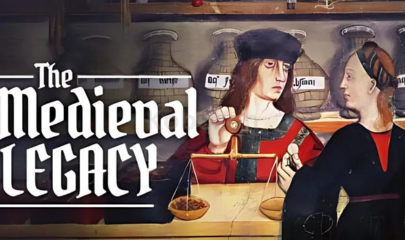 The Medieval Legacy By Carol Symes
1 × $5,00
The Medieval Legacy By Carol Symes
1 × $5,00 -
×
 Freedom By Peter Crone
1 × $39,00
Freedom By Peter Crone
1 × $39,00 -
×
 Becoming Radiant By Donna Eden
1 × $39,00
Becoming Radiant By Donna Eden
1 × $39,00 -
×
 How to Lead and Coach By Design By Elisa Canali
1 × $23,00
How to Lead and Coach By Design By Elisa Canali
1 × $23,00 -
×
 Master of Connection By John Keegan
1 × $209,00
Master of Connection By John Keegan
1 × $209,00 -
×
 Recruiting Professionals Live Dials By Todd Falcone
1 × $23,00
Recruiting Professionals Live Dials By Todd Falcone
1 × $23,00 -
×
 The Only Astra Academy By Jermaine Francois
1 × $15,00
The Only Astra Academy By Jermaine Francois
1 × $15,00 -
×
 Programming with Emerging Strategies By Mike Tuchscherer - Reactive Training Systems
1 × $209,00
Programming with Emerging Strategies By Mike Tuchscherer - Reactive Training Systems
1 × $209,00 -
×
 Hedged Strategy Series in Volatile Markets All 4 By Dan Sheridan
1 × $15,00
Hedged Strategy Series in Volatile Markets All 4 By Dan Sheridan
1 × $15,00 -
×
 Product Marketing Resume Boost By Melinda Chung
1 × $23,00
Product Marketing Resume Boost By Melinda Chung
1 × $23,00 -
×
 Brand Positioning Master Course by Marty Marion
1 × $5,00
Brand Positioning Master Course by Marty Marion
1 × $5,00 -
×
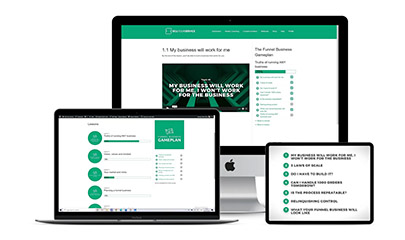 Seven Figure Freedom By Michael Killen
1 × $62,00
Seven Figure Freedom By Michael Killen
1 × $62,00 -
×
 Lapel Attacks by Robson Gracie
1 × $6,00
Lapel Attacks by Robson Gracie
1 × $6,00 -
×
 Weightless Wealth By Elisa Canali
1 × $31,00
Weightless Wealth By Elisa Canali
1 × $31,00 -
×
 PUA Cribs: Project Bel-Air by Johnny Wolf
1 × $5,00
PUA Cribs: Project Bel-Air by Johnny Wolf
1 × $5,00 -
×
 Options Trading Workshop On Demand By Affordable Financial Education
1 × $69,00
Options Trading Workshop On Demand By Affordable Financial Education
1 × $69,00 -
×
 Changing Perspectives through the Rhizome By John Overdurf
1 × $23,00
Changing Perspectives through the Rhizome By John Overdurf
1 × $23,00 -
×
 Master The Bedroom Program By Apollonia Ponti
1 × $31,00
Master The Bedroom Program By Apollonia Ponti
1 × $31,00 -
×
 Business by Design: Fuel By Unlock Your Design Academy
1 × $23,00
Business by Design: Fuel By Unlock Your Design Academy
1 × $23,00 -
×
 OHC in Action: Rhizomatic Alignment By John Overdurf
1 × $78,00
OHC in Action: Rhizomatic Alignment By John Overdurf
1 × $78,00 -
×
 Secrets Of Subtle Sales Mastery Deluxe By Paul Ross
1 × $23,00
Secrets Of Subtle Sales Mastery Deluxe By Paul Ross
1 × $23,00 -
×
 Complete Wholesaling Playbook By King Khang
1 × $31,00
Complete Wholesaling Playbook By King Khang
1 × $31,00 -
×
 How I use Technical Analysis And Orderflow By Adam Webb - Traderskew
1 × $54,00
How I use Technical Analysis And Orderflow By Adam Webb - Traderskew
1 × $54,00 -
×
 Affiliate Marketing Course By Sara Finance
1 × $46,00
Affiliate Marketing Course By Sara Finance
1 × $46,00 -
×
 S22: Tarek Bibi (B) Ultimate Spiritual Mastery Course By FHTJ Programs
1 × $39,00
S22: Tarek Bibi (B) Ultimate Spiritual Mastery Course By FHTJ Programs
1 × $39,00 -
×
 Mutual Masturbation: Enjoy Self-Pleasuring Together By Yves Bonroy
1 × $5,00
Mutual Masturbation: Enjoy Self-Pleasuring Together By Yves Bonroy
1 × $5,00 -
×
 Relationships Revival By Relationships Mastered
1 × $69,00
Relationships Revival By Relationships Mastered
1 × $69,00 -
×
 2 Girls Teach Sex Bundle By Bobby Bradshaw, Shawna Lenee And Tori Black
1 × $5,00
2 Girls Teach Sex Bundle By Bobby Bradshaw, Shawna Lenee And Tori Black
1 × $5,00 -
×
 Gnosticism: From Nag Hammadi to the Gospel of Judas By David Brakke
1 × $5,00
Gnosticism: From Nag Hammadi to the Gospel of Judas By David Brakke
1 × $5,00 -
×
 7 Powers Package By John Demartini
1 × $31,00
7 Powers Package By John Demartini
1 × $31,00 -
×
 Wealth Alchemy 2.0 By Elisa Canali
1 × $31,00
Wealth Alchemy 2.0 By Elisa Canali
1 × $31,00
Propaganda and Persuasion By Dannagal Young
$169,00 $5,00
Propaganda and Persuasion by Dannagal G. Young: An In-Depth Review – Immediate Download!
Let’s embark on a captivating adventure to uncover remarkable insights that spark your curiosity and elevate your understanding
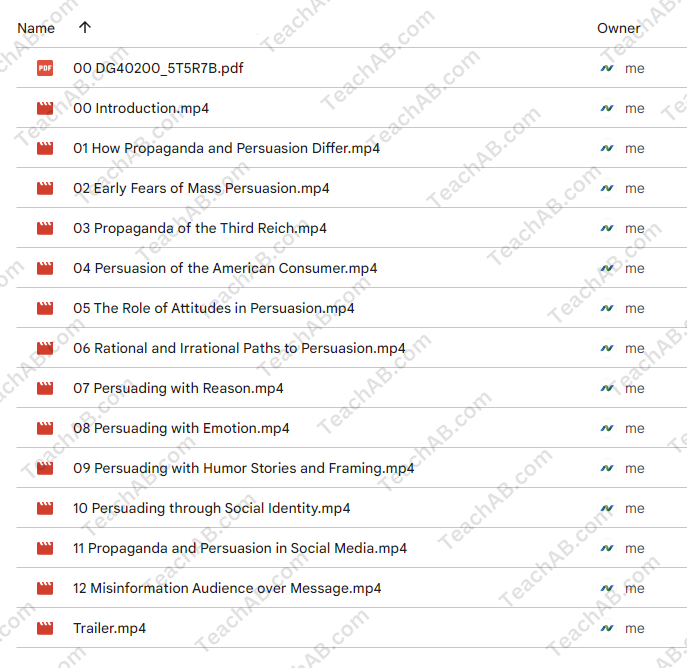
Propaganda and Persuasion By Dannagal Young
Overview
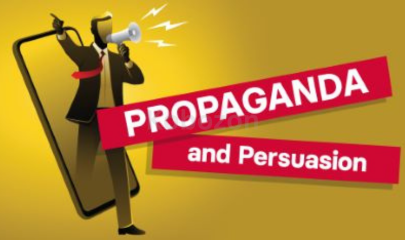
Propaganda and Persuasion by Dannagal G. Young: An In-Depth Review
In an age where information flows like a torrent, the role of propaganda becomes increasingly pronounced. Propaganda and Persuasion by Dannagal G. Young is a significant contribution to understanding this complex phenomenon. Young intricately examines how various forms of propaganda influence public opinion and behavior, drawing from psychological principles of persuasion. This book invites readers to delve deep into the mechanisms of messaging that shape societal views, whether in politics, media, or everyday interactions. Young positions propaganda not merely as a tool for manipulation but as a fundamental aspect of communication that reflects and shapes our perceptions of reality.
The Foundations of Propaganda
Understanding Propaganda
Propaganda, in its broadest sense, refers to the dissemination of information be it factual or fabricated to shape perceptions and influence behavior. Young breaks down this multifaceted notion into digestible components, exploring its historical context and evolution. She illustrates how propaganda has been part of human society for ages, from ancient forms of rhetoric in political discourse to modern advertising campaigns that leverage psychological insights.
For example, during wartime, propaganda serves as a rallying cry. Posters portraying the enemy in a dehumanizing light were widespread during World War II, illustrating how messages can be crafted to evoke strong emotional reactions. Young emphasizes that the effectiveness of propaganda lies in its ability to tap into existing beliefs and fears, often using vivid imagery and emotional appeals to stir public sentiment.
Psychological Principles of Persuasion
Young’s work is steeped in theories rooted in psychology, making it essential for readers to understand basic principles of persuasion. She outlines key psychological mechanisms that underpin the effectiveness of propaganda, such as:
- Cognitive Dissonance: The conflict arising from holding contradictory beliefs can prompt individuals to adjust their perceptions for internal consistency.
- Social Proof: People are more likely to conform to actions or beliefs that they see others adopting, playing into the herd mentality.
- Reciprocity: The innate human tendency to return favors can be exploited to foster loyalty to a cause.
By staying attuned to these psychological nuances, propagandists can craft messages that resonate and persuasively shift public opinion. Young effectively illustrates these concepts through contemporary examples, such as political campaigns where candidates frame narratives in ways that align with voters’ predisposed beliefs.
Mechanisms of Propaganda in Modern Media
The Role of Digital Media
Young dives into how digital media has transformed the landscape of propaganda in significant ways. The internet facilitates a rapid spread of information, allowing diverse messages to reach a global audience. However, the virality of such information comes with challenges, including the rise of misinformation and echo chambers.
Platforms like Facebook and Twitter serve as modern arenas for propaganda wars, where information factual or not travels at breakneck speed. Young points to the 2016 U.S. presidential election as a pivotal case study, highlighting how misinformation campaigns successfully exploited social networks to sway public opinion and disrupt democratic processes.
The Impact of Visual Imagery
Visual elements in media also play a crucial role in propaganda. Young discusses how images evoke emotions more immediately than text, making visual storytelling a powerful tool for persuasion.
The effectiveness of propaganda is often grounded in its ability to create compelling narratives filled with emotional resonance. For instance, consider the impact of powerful imagery in humanitarian campaigns. Images of suffering children can stimulate a strong emotional response, prompting immediate action or support. Young notes that understanding how to harness this emotional power is vital for both propagandists aiming to influence and citizens striving to navigate this complex media landscape.
Case Studies: Propaganda in Action
- Political Campaigns: Young explores various political advertising campaigns, examining how candidates frame themselves and their opponents through carefully crafted messaging.
- Public Health Campaigns: The difference in messaging around smoking cessation campaigns versus those promoting vaccination demonstrates how propaganda can serve public interests but also backfire if not approached carefully.
- Consumer Marketing: In the realm of advertising, strategies that blend identity and consumer behavior think of Apple’s brand messaging serve as testament to the influence of propaganda in daily life.
Implications of Propaganda on Society
Cultural and Ethical Considerations
With great power comes great responsibility. Young addresses the ethical ramifications of propaganda, posing critical questions about its role in society. While the ability to influence public opinion can be a potent tool for social good, it also raises concerns about manipulation and deception.
Can propaganda ever be justified? Young argues that while genuine public health campaigns can educate and inform, when such tactics deviate into misinformation or fear-mongering, the line blurs significantly. This duality necessitates a thoughtful approach to understanding the potential for both positive and negative implications of propaganda.
The Citizen’s Response
Young also emphasizes the importance of media literacy among citizens. In a world saturated with propaganda, individuals must arm themselves with the skills to discern information critically. Engaging in reflective thinking and questioning the motives behind messages equips citizens to navigate the complexities of modern media.
- Critical Thinking: Analyzing sources, questioning intentions, and exploring alternative viewpoints.
- Engagement: Actively participating in dialogue and discourse to foster understanding, rather than division.
- Education: Advocating for programs that promote media literacy from a young age, ensuring that future generations are prepared to confront media messages head-on.
The Future of Propaganda and Persuasion
Propaganda in a Globalized World
As a result of globalization and advances in communications technology, Young presents provocative questions surrounding the future of propaganda. How will evolving AI technologies and the spread of deepfake media influence the credibility of information? These considerations compel society to reflect on the broader implications of technological advancements on the mechanisms of persuasion.
Conclusion
Propaganda and Persuasion by Dannagal G. Young is an indispensable resource for understanding the intricate dance of messaging that influences our world. Through a comprehensive examination of psychological principles, modern media dynamics, and ethical considerations, Young provides readers with insight into the power and perils of propaganda in the contemporary landscape. It challenges us to become more discerning consumers of information and ignites a vital discussion about the responsibility of both media producers and consumers in shaping public discourse. As we continue to navigate the complexities of propaganda, Young’s work serves as a guiding light, urging us to foster a more informed and engaged society that values truth over manipulation.
Frequently Asked Questions:
Innovation in Business Models: We use a group purchase approach that enables users to split expenses and get discounted access to well-liked courses. Despite worries regarding distribution strategies from content creators, this strategy helps people with low incomes.
Legal Aspects to Take into Account: Our operations’ legality entails several intricate considerations. There are no explicit resale restrictions mentioned at the time of purchase, even though we do not have the course developers’ express consent to redistribute their content. This uncertainty gives us the chance to offer reasonably priced instructional materials.
Quality Control: We make certain that every course resource we buy is the exact same as what the authors themselves provide. It’s crucial to realize, nevertheless, that we are not authorized suppliers. Therefore, the following are not included in our offerings: – Live coaching sessions or calls with the course author.
– Entry to groups or portals that are only available to authors.
– Participation in closed forums.
– Straightforward email assistance from the writer or their group.
Our goal is to lower the barrier to education by providing these courses on our own, without the official channels’ premium services. We value your comprehension of our distinct methodology.
Be the first to review “Propaganda and Persuasion By Dannagal Young” Cancel reply
You must be logged in to post a review.
Related products
Personal Development
Personal Development
Human Design Business Kickstart Bundle 2024 By Becca Francis
Personal Development
The Others Within Us – Unattached Burdens and Guides in IFS Therapy By Robert Falconer
Personal Development
Personal Development
Personal Development
Personal Development
Cognomovement An Energy Healing System With Bill McKenna and Liz Larson – The Shift Network
Personal Development
Personal Development
Online – The Demartini Values Training Program – USA 2020 (Videos Only) By Dr John Demartini















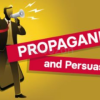
Reviews
There are no reviews yet.